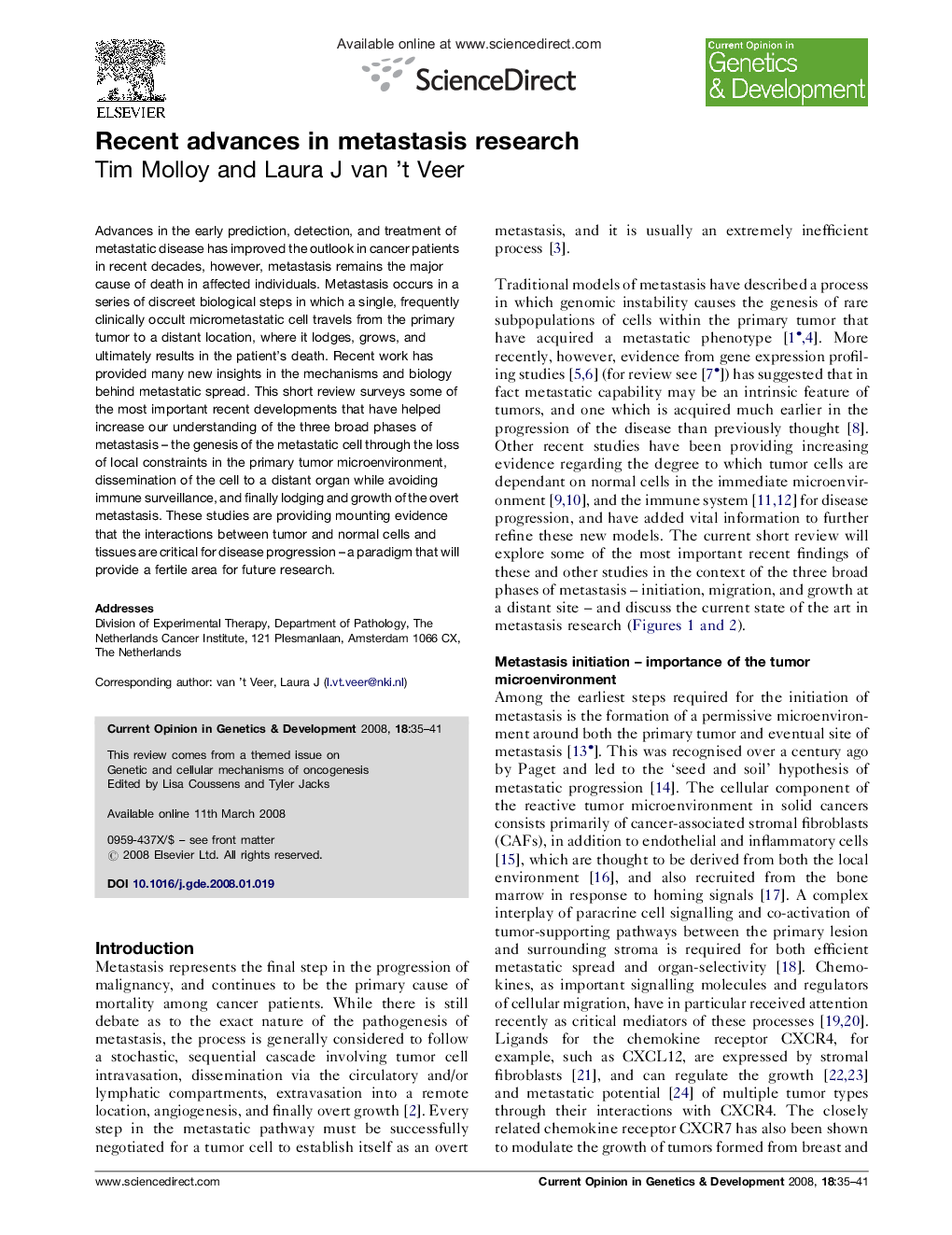| Article ID | Journal | Published Year | Pages | File Type |
|---|---|---|---|---|
| 2785127 | Current Opinion in Genetics & Development | 2008 | 7 Pages |
Advances in the early prediction, detection, and treatment of metastatic disease has improved the outlook in cancer patients in recent decades, however, metastasis remains the major cause of death in affected individuals. Metastasis occurs in a series of discreet biological steps in which a single, frequently clinically occult micrometastatic cell travels from the primary tumor to a distant location, where it lodges, grows, and ultimately results in the patient's death. Recent work has provided many new insights in the mechanisms and biology behind metastatic spread. This short review surveys some of the most important recent developments that have helped increase our understanding of the three broad phases of metastasis – the genesis of the metastatic cell through the loss of local constraints in the primary tumor microenvironment, dissemination of the cell to a distant organ while avoiding immune surveillance, and finally lodging and growth of the overt metastasis. These studies are providing mounting evidence that the interactions between tumor and normal cells and tissues are critical for disease progression – a paradigm that will provide a fertile area for future research.
